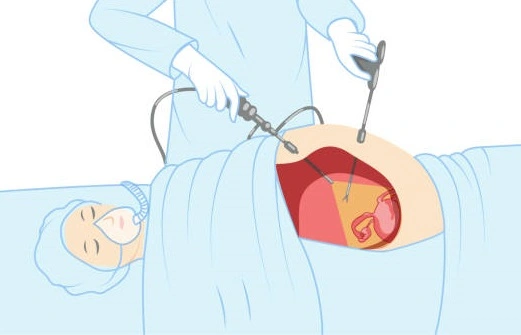In the realm of women’s health, understanding various aspects of repair surgery is crucial for informed decisions. This comprehensive guide delves into the intricacies of female repair surgery, exploring types, common reasons, and essential insights for a well-rounded perspective.
What Is Repair Surgery in Female?
Repair surgery in females refers to a range of medical procedures designed to address and correct various health issues affecting women. These surgeries aim to restore normal anatomical structures, alleviate symptoms, and improve overall well-being. From pelvic floor repair to breast reconstruction, these interventions play a crucial role in enhancing the quality of life for women facing specific health challenges.
What Is Repair Surgery in Females?
In the realm of women’s health, repair surgery plays a crucial role in addressing various conditions. Understanding the types and reasons for female repair surgery is essential for informed decisions and optimal well-being.
Types of Repair Surgery for Females
- Pelvic Floor Repair:
- Targeting issues like pelvic organ prolapse, this surgery restores support structures for improved functionality.
- Hernia Repair:
- Femoral, inguinal, or umbilical hernias may necessitate surgical intervention to repair weakened abdominal walls.
- Following mastectomy, reconstructive surgery aims to restore the natural appearance of breasts, aiding physical and emotional recovery.
- Genital Reconstruction:
- Surgical procedures may be performed to address congenital anomalies or injuries affecting the female genitalia.
Common Reasons for Female Repair Surgery
- Childbirth-Related Issues:
- Vaginal tears, episiotomy complications, or pelvic floor damage may require surgical correction post childbirth.
- Pelvic Organ Prolapse:
- Weakening of pelvic floor muscles can lead to prolapse, necessitating surgical repair for improved organ support.
- Breast Cancer Treatment:
- Mastectomy often prompts breast reconstruction surgery, providing women with options for restoring their physical appearance.
- Hernias:
- Conditions like inguinal hernias are common in women, requiring surgical repair to prevent complications.
Benefits of Female Repair Surgery
Female repair surgery offers a multitude of benefits, addressing various health issues and enhancing overall well-being. These benefits may include:
- Improved Quality of Life: Addressing health concerns through surgery can significantly improve a woman’s overall quality of life, allowing her to resume normal activities without discomfort.
- Enhanced Confidence and Self-Esteem: Procedures like breast reconstruction contribute to restoring a woman’s physical appearance after surgeries such as mastectomy, positively impacting self-esteem and body image.
- Relief from Pain and Discomfort: Repair surgeries can alleviate pain and discomfort associated with conditions like pelvic organ prolapse or hernias, providing relief and improved daily functioning.
- Correction of Functional Issues: Surgical interventions can correct functional issues related to childbirth, pelvic floor weakness, or other gynecological conditions, allowing for improved bodily functions.
- Treatment for Medical Conditions: Repair surgeries are often crucial components of the treatment plan for medical conditions such as breast cancer, providing a comprehensive approach to health management.
Preparing for Female Repair Surgery
Effective preparation for female repair surgery is essential to ensure a smooth and successful procedure. Consider the following:
- Consultation with Healthcare Professionals: Discuss the procedure thoroughly with your healthcare team, addressing any concerns and gaining a comprehensive understanding of the surgery.
- Preoperative Evaluations: Undergo necessary preoperative evaluations, including medical tests, to assess your overall health and identify potential risks.
- Understanding the Procedure: Gain a clear understanding of the specific repair surgery, including the expected outcomes, potential risks, and recovery process.
- Emotional Preparation: Acknowledge and address emotional aspects, especially for procedures like breast reconstruction, as they can have a profound impact on mental well-being.
You may want to read : Enhancing Beauty: A Guide to Breast Surgery Procedures
Preoperative Instructions and Guidelines
Follow these preoperative instructions to ensure a successful surgery:
- Fasting: Adhere to fasting guidelines provided by your healthcare team, typically requiring abstaining from food and liquids for a specified period before surgery.
- Medication Management: Follow instructions regarding medication, including which ones to continue or stop before surgery.
- Hygiene Practices: Practice proper hygiene, including bathing with antibacterial soap, to reduce the risk of infections.
- Arrangements for Recovery: Plan for transportation to and from the surgical facility, as well as arrangements for postoperative care and support.
Potential Risks and Complications Associated with Female Repair Surgery
While female repair surgery offers numerous benefits, it’s essential to be aware of potential risks and complications, which may include:
- Infection: Surgical sites can be susceptible to infections, requiring prompt medical attention.
- Bleeding: Excessive bleeding during or after surgery may occur and may require additional interventions.
- Anesthesia Risks: Risks associated with anesthesia, including allergic reactions or respiratory issues.
- Scarring: Depending on the procedure, scarring is a common outcome, with variations in visibility and size.
- Nerve Damage: Some surgeries carry the risk of nerve damage, leading to sensory changes or loss.
- Reactions to Implants: For procedures involving implants, there’s a potential for reactions or complications related to the implant material.
It’s crucial to discuss these potential risks with your healthcare team and follow their guidance for a safe and successful outcome. Regular follow-up appointments post-surgery are also important to monitor and manage any complications effectively.
Alternatives to Female Repair Surgery
While female repair surgery is often effective, there are alternative approaches to consider, depending on the specific condition. These may include:
- Physical Therapy:
Pelvic floor exercises and physical therapy can be beneficial for conditions like pelvic organ prolapse, providing non-invasive methods to strengthen muscles.
- Medication:
Depending on the issue, medications may be prescribed to manage symptoms or address underlying causes without the need for surgery.
- Lifestyle Modifications:
Changes in lifestyle, such as weight management, can contribute to alleviating symptoms associated with conditions like hernias or pelvic floor disorders.
- Non-Surgical Interventions:
Some conditions may be managed with minimally invasive procedures or non-surgical interventions as an alternative to more extensive repair surgeries.
Cost of Female Repair Surgery in UAE
The cost of female repair surgery in the UAE can vary based on several factors, including the type of procedure, the complexity of the case, the surgeon’s experience, and the healthcare facility chosen. Prices typically range from AED 7,999 to AED 14,999, with the exact cost depending on specific factors such as the chosen implantation method.
For individuals considering female repair surgery, it’s advisable to consult with reputable healthcare providers in the UAE. Obtaining detailed cost estimates is crucial, as these should include surgery fees, hospital charges, anesthesia costs, and any potential additional expenses.
If you have any concerns or questions about female repair surgery, it is recommended to discuss them with qualified medical professionals who can provide personalized advice based on your individual circumstances. Always prioritize your health and well-being when making decisions about medical procedures.
What to Expect After Female Repair Surgery
After female repair surgery, the recovery process will depend on the specific procedure performed. However, some general expectations include:
- Postoperative Care:
Follow the postoperative care instructions provided by your healthcare team, including wound care, medications, and activity restrictions.
- Pain Management:
Pain and discomfort are common initially, but your healthcare team will provide pain management strategies to keep you comfortable.
- Recovery Time:
The recovery period varies based on the surgery. Some procedures may require a few weeks of rest, while others may have a longer recovery duration.
- Follow-up Appointments:
Attend scheduled follow-up appointments to monitor your progress and address any concerns or complications.
- Gradual Resumption of Activities:
Your healthcare team will guide you on when and how to gradually resume normal activities, including work, exercise, and daily tasks.
- Potential Side Effects:
Be aware of potential side effects or complications and promptly report any unusual symptoms to your healthcare provider.
- Emotional Well-being:
Acknowledge and address any emotional aspects related to the surgery, especially for procedures that may impact body image.
It’s crucial to maintain open communication with your healthcare team and follow their guidance for a smooth recovery. Every individual’s experience may differ, so understanding and adhering to the specific postoperative instructions provided is essential for a successful outcome.
FAQs about Female Repair Surgery in UAE
What is female reconstructive surgery?
Female reconstructive surgery refers to a set of medical procedures aimed at restoring or improving the structure and function of various female anatomical features. This may include surgeries such as breast reconstruction after mastectomy, genital reconstruction to address congenital anomalies or injuries, or other procedures designed to enhance both physical and emotional well-being.
What is pelvic repair surgery?
A2: Pelvic repair surgery is a type of surgical intervention that focuses on addressing issues related to the pelvic region, particularly the pelvic floor. This can involve repairing or reinforcing the pelvic floor muscles and structures to address conditions such as pelvic organ prolapse, incontinence, or other pelvic floor disorders. The goal is to restore normal anatomy and function, alleviating symptoms and improving the quality of life for individuals experiencing pelvic issues.














Leave a Reply